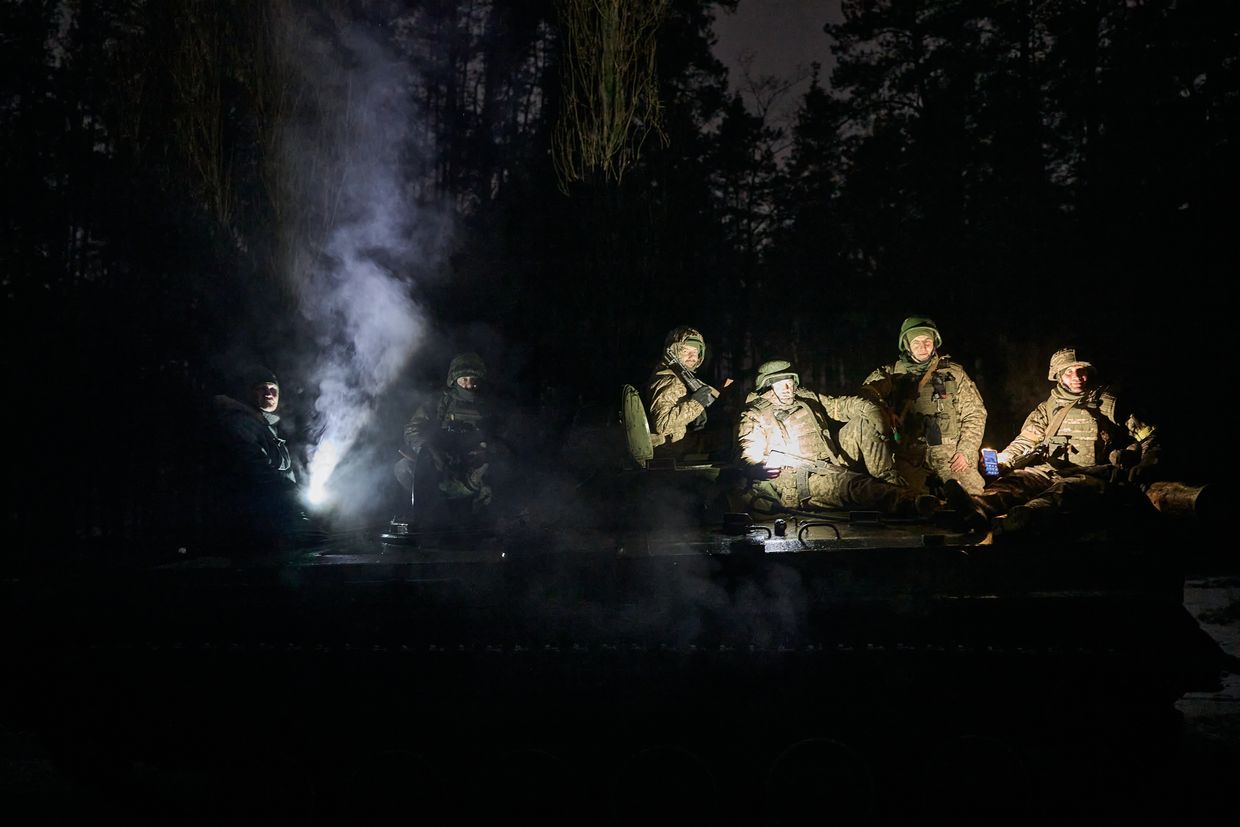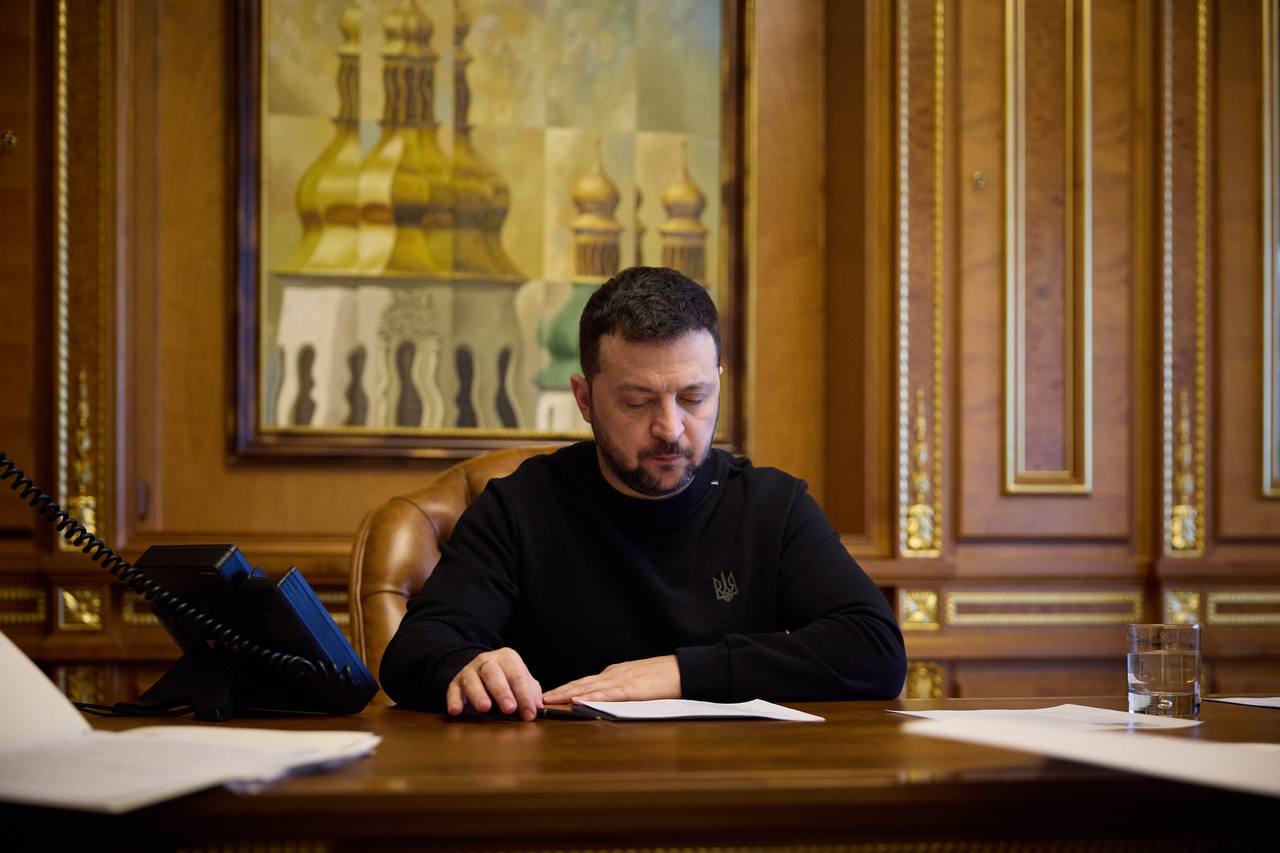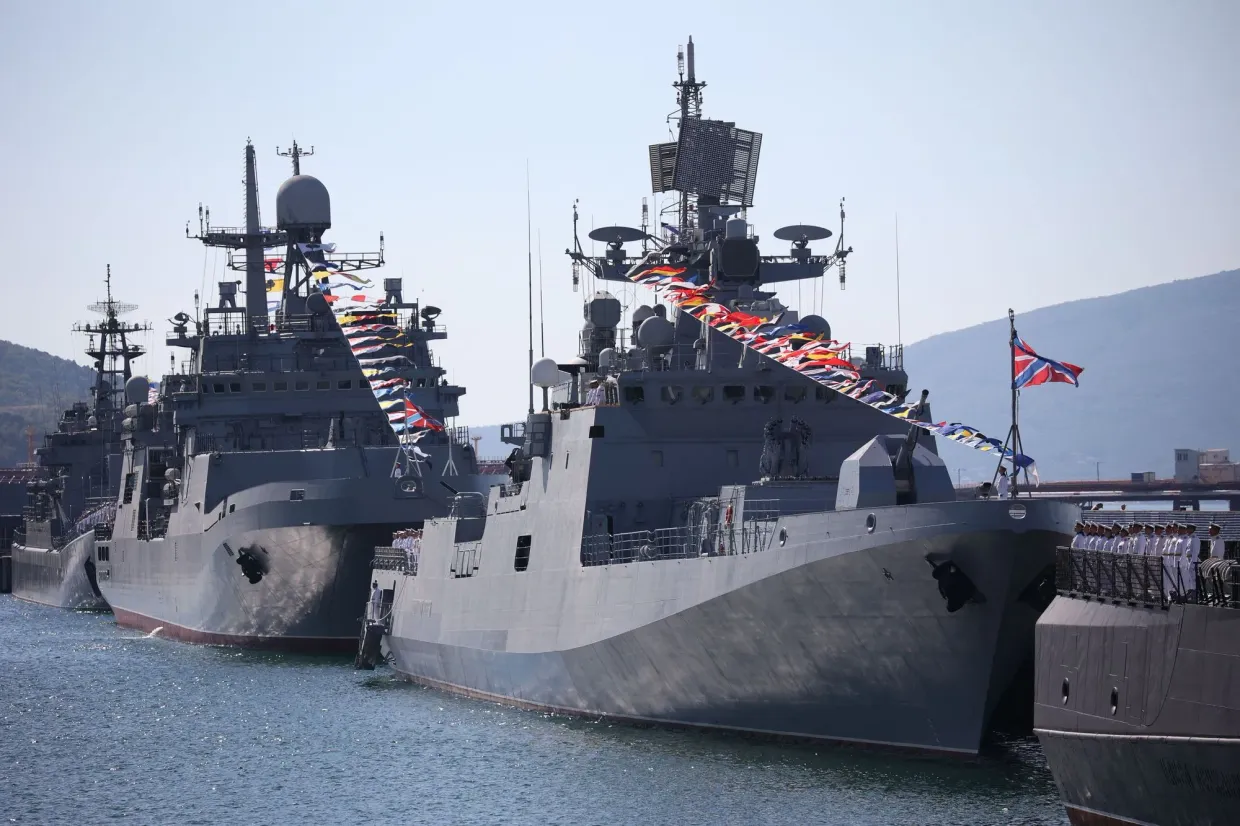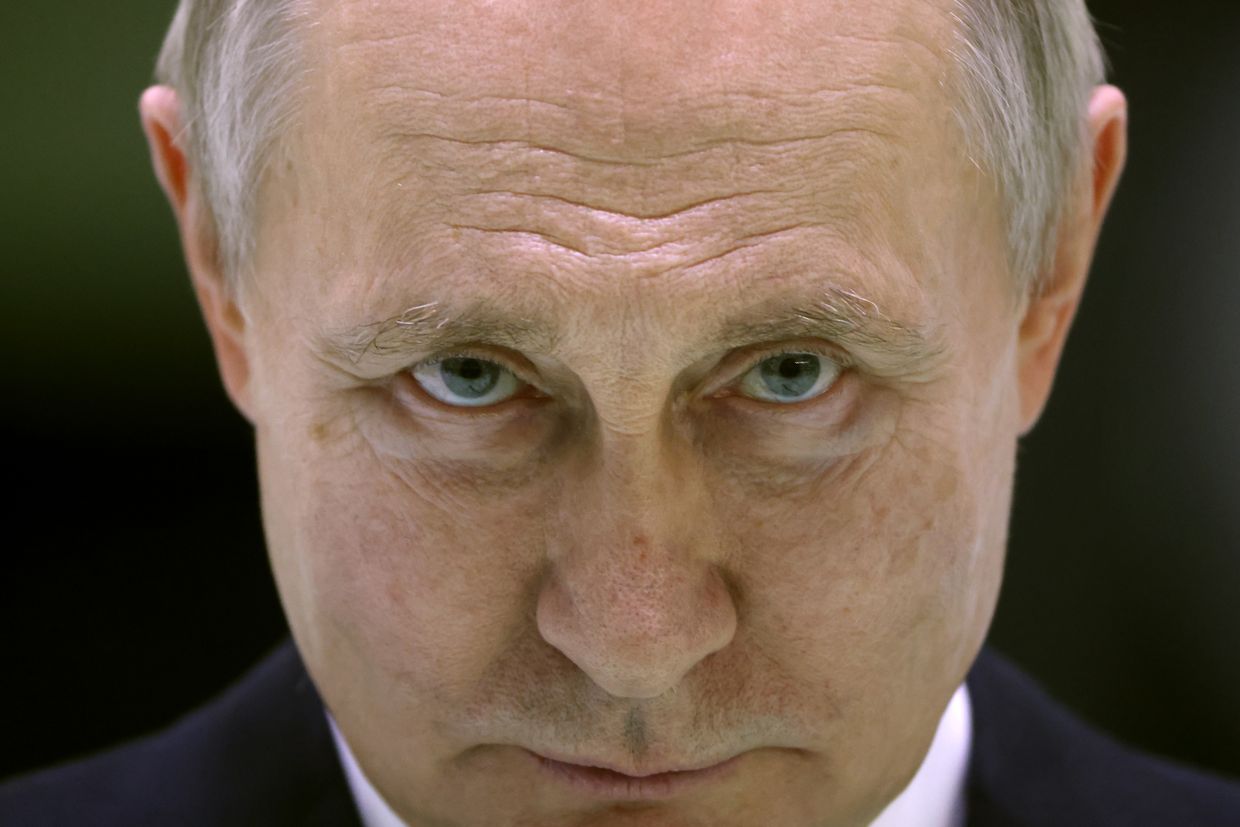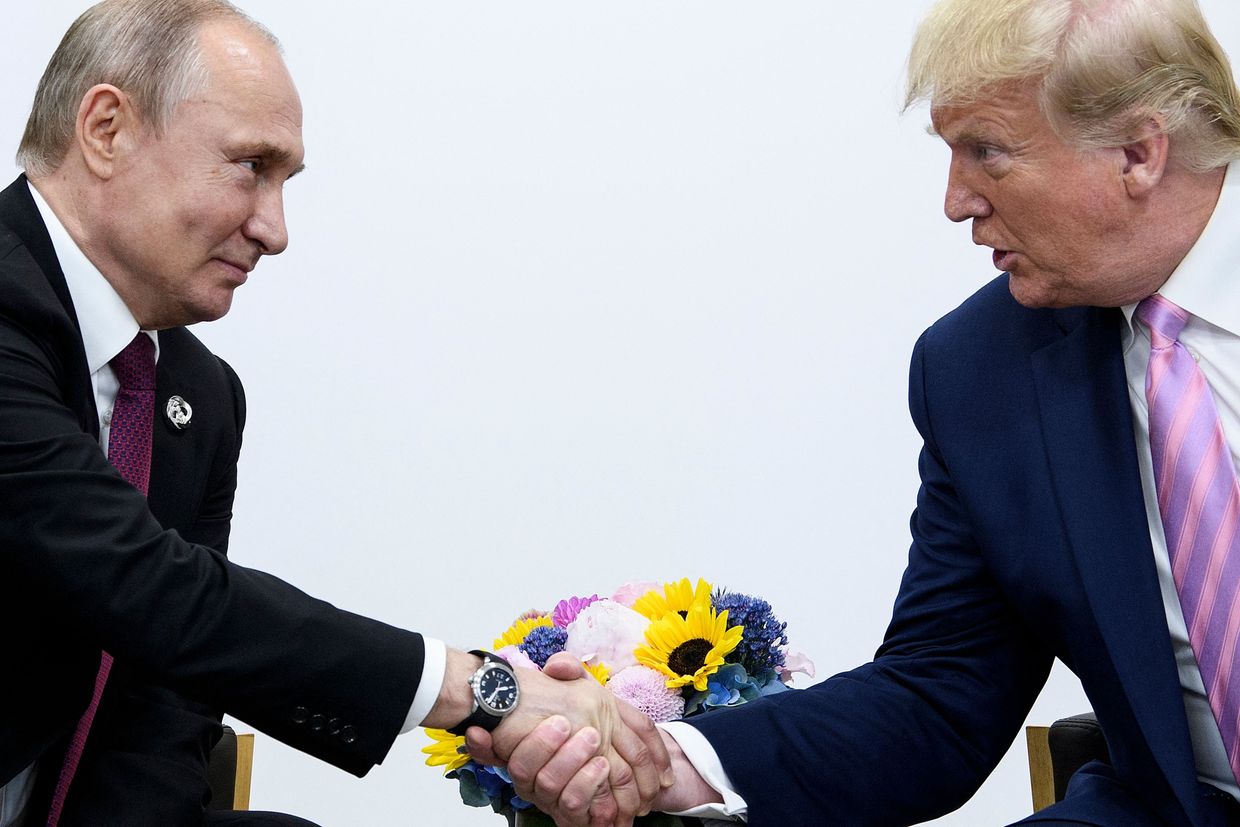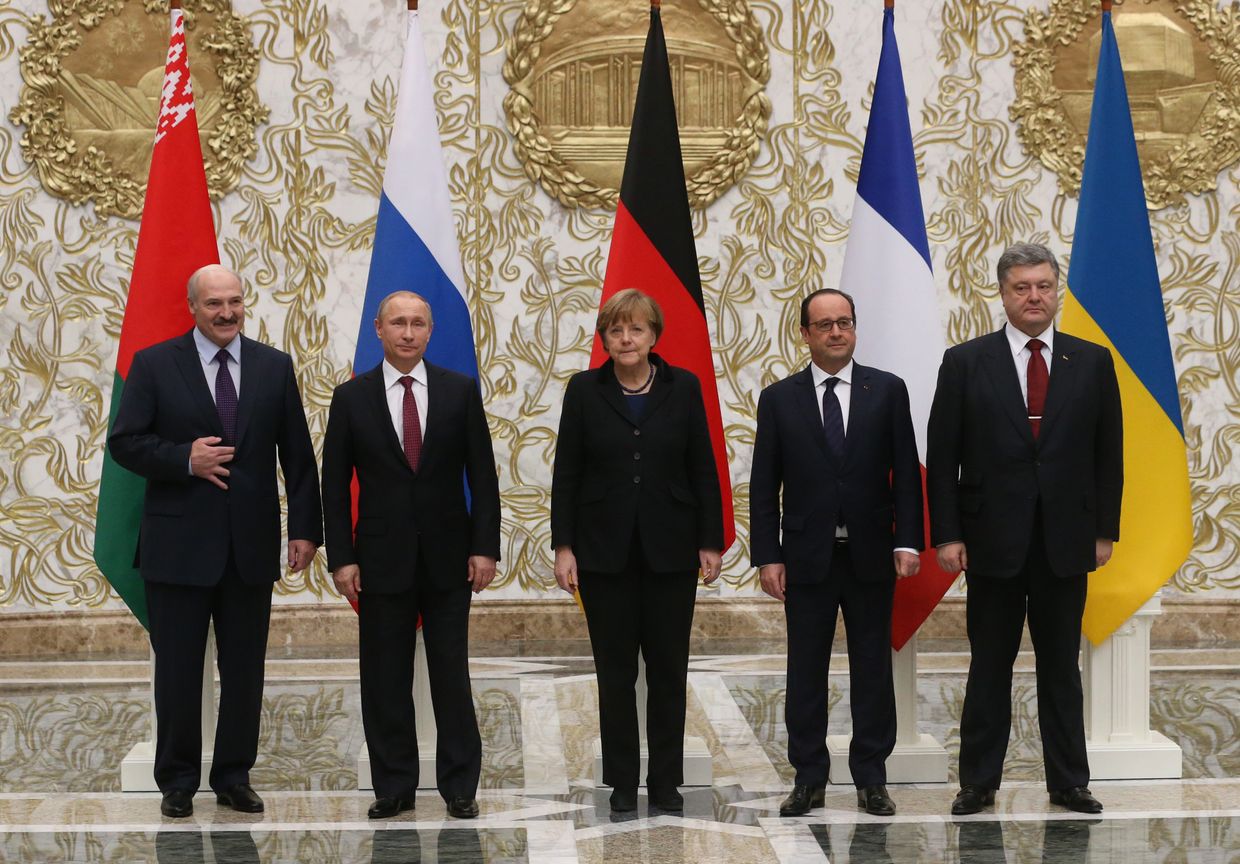Editor's note: The Kyiv Independent is not disclosing the full names of soldiers due to what they cited as security concerns and their unit's protocol amid the war in Ukraine.
KHARKIV OBLAST — As Russia rolls past now-occupied Avdiivka further west, other parts of the front have seen quieter days. But as the thick layers of mud dry up, a pronged Russian offensive seems imminent.
Ukrainian soldiers defending Kupiansk brace for a renewed major push.
"I think that (Russian troops) are preparing for a breakthrough (in the Kupiansk direction). The ground will dry up, and they will gather all forces, all equipment," said 47-year-old infantryman Ruslan with Ukraine's 43rd Separate Mechanized Brigade deployed on the Kupiansk axis. "I think something not great (for us) will happen."
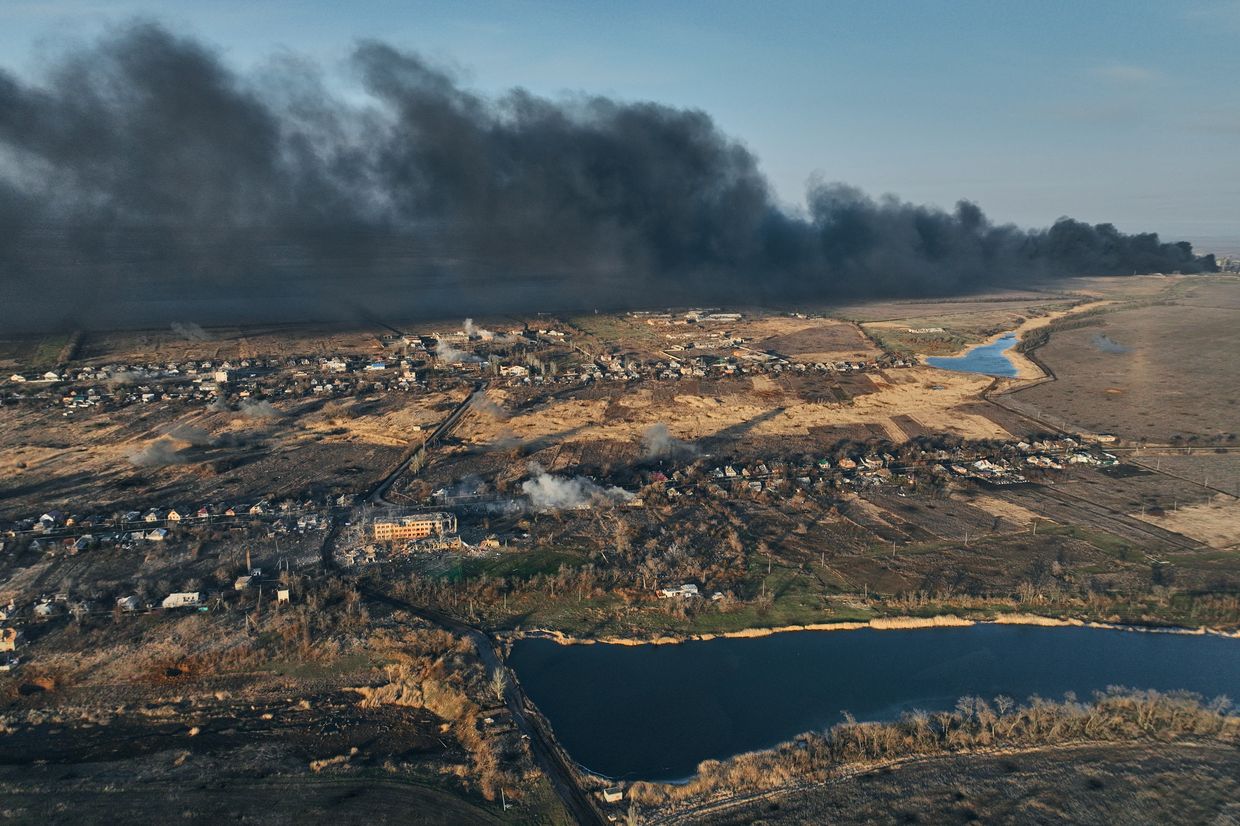
For now, Russia is intensively using drones and artillery to attack Ukrainian positions, but very few close-range battles are occurring, according to Ukrainian soldiers deployed in the area.
Eastward of Kupiansk, a strategic railway hub held by Russia for six months in 2022, there have already been a few large-scale attacks in the recent past, with the latest one in January enabling Russia to make some progress near three deserted villages – Krokhmalne, Tabaivka, and Kotliarivka – which Moscow says it now controls.
Small Russian assault groups are constantly working to detect weak spots for a potential breakthrough, according to Ukrainian soldiers and officers interviewed by the Kyiv Independent.
The heaviest fighting in the area rages on near the villages of Synkivka, just over 10 kilometers (6 miles) northeast of Kupiansk, and Tabaivka, a few dozen kilometers away – close to the largely Russian-occupied Luhansk Oblast.
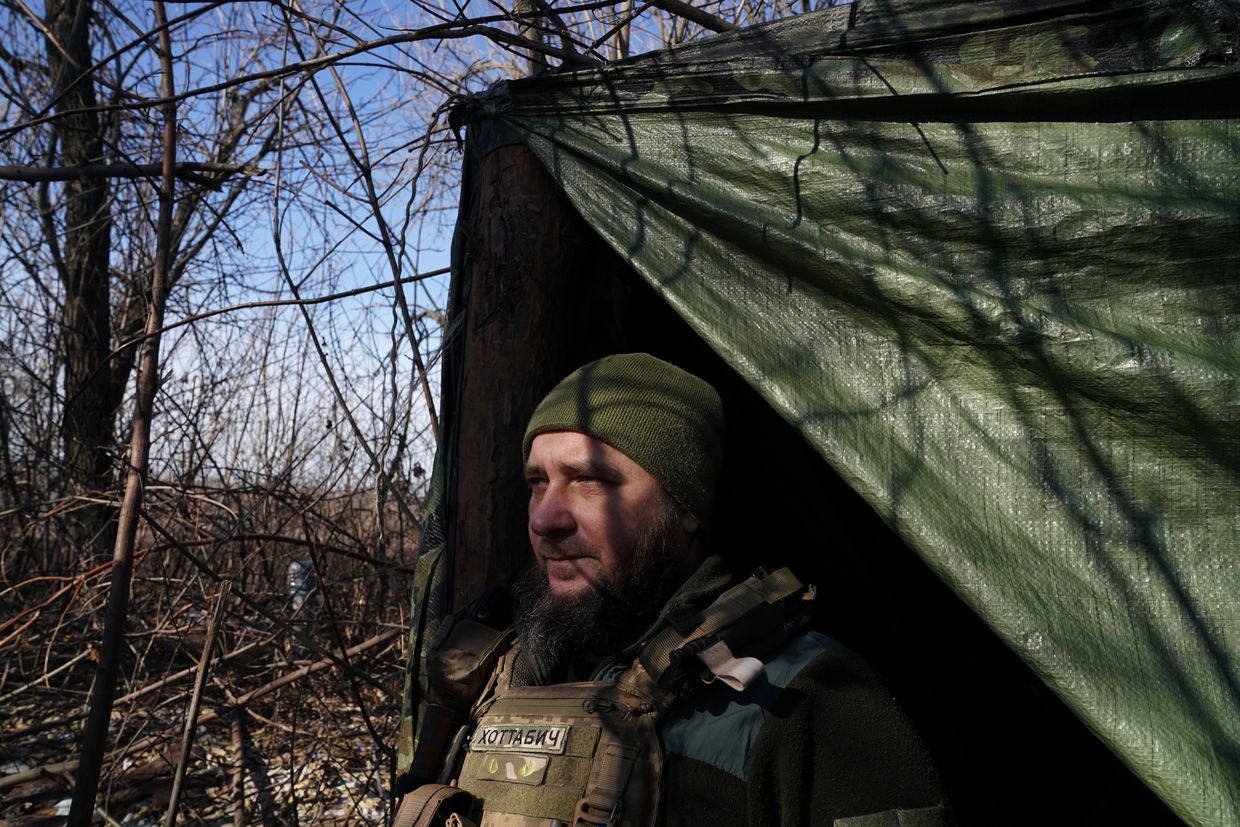
While Russian troops had entered Synkivka at certain point in the battle, Ukraine has held control of the village despite Moscow's attempt to capture it since summer 2023, according to Ukrainian military expert Oleksandr Musiienko, who heads Kyiv-based National Defense University's Center for Military and Strategic Studies.
Ukraine's military reported on Feb. 29 that Russian troops were continuing their assault on Synkivka, hoping to pave the way for the blockade of nearby Kupiansk.
Further eastward, Tabaivka remains a grey zone with neither side actually controlling the village, Musiienko said.
Ukrainian troops are holding onto the heights on the village's outskirts, as Russia continues to wage an offensive from Luhansk Oblast, he added.
Military analysts have told the Kyiv Independent that Russia has transferred units fighting on the Kupiansk front to Avdiivka in order to complete the capture of the city, which fell to Russia on Feb. 17.
Now, the Kupiansk garrison is bracing for a new attack.
"If more troops arrive there, fresh forces that are ready to conduct offensive operations, then they would, of course, attack," Musiienko said.

Most defended front
Learning from the mistakes of the lack of fortification on the Avdiivka front that allowed Russia to advance further west, Ukraine is straightening defense lines in Kharkiv Oblast to avoid a similar scenario.
Austrian warfare expert Tom Cooper says he expects Russia to focus on the Avdiivka offensive for now, as it lacks resources to launch another "peak offensive" involving six to 10 brigades attacking at once on another front.
President Volodymyr Zelensky has reiterated twice at press conferences over the winter that Kupiansk remains the most fortified area of the front line.
"Even if they would say, okay, let's now do the same in Kupiansk as well – Ukrainian positions, fortifications, the defense line in the Kupiansk area is firm, it's holding, it was being constructed for one-and-a-half years," Cooper told the Kyiv Independent.
"If they send six or seven brigades out there to attack in the direction of Kupiansk, they're going to get massacred and achieve nothing."
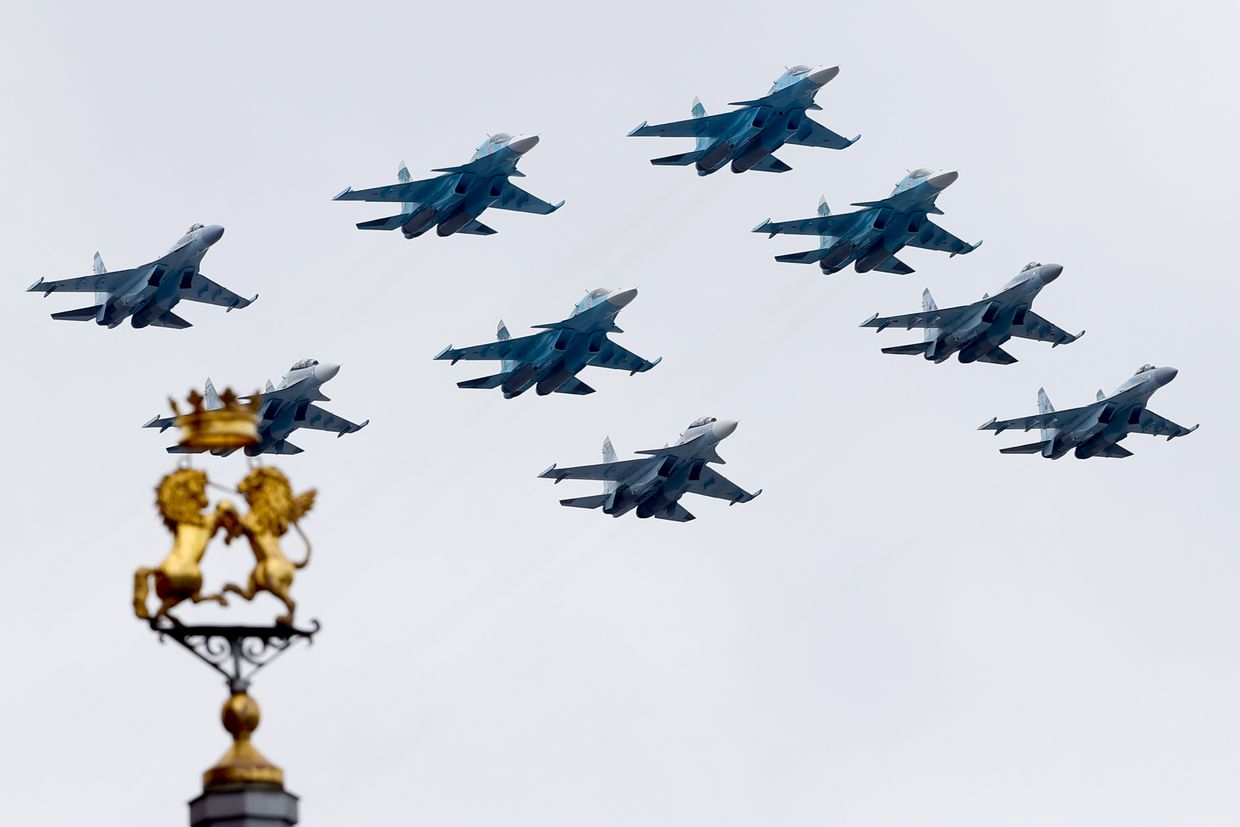
Fearing a repeat of the Avdiivka situation in the strategic Kupiansk area, Ukrainian forces are taking their time to build "dragon's teeth," pyramidal anti-tank defense fortifications made of concrete, and deep trenches even far from the front line.
The Ukrainians say it's dangerous to underestimate Russia's offensive capabilities that – at least to them – feel never-ending.
Even if Russia's ground operations –carried out by assault groups or armored vehicles – have decreased, they continue to target Ukrainian positions with artillery, drones, and aviation, according to Musiienko.
"And plus, obviously, (Russian troops) are waiting for the situation to change, they are waiting for their own forces to be replenished in order to try to resume more active offensive actions," he added.
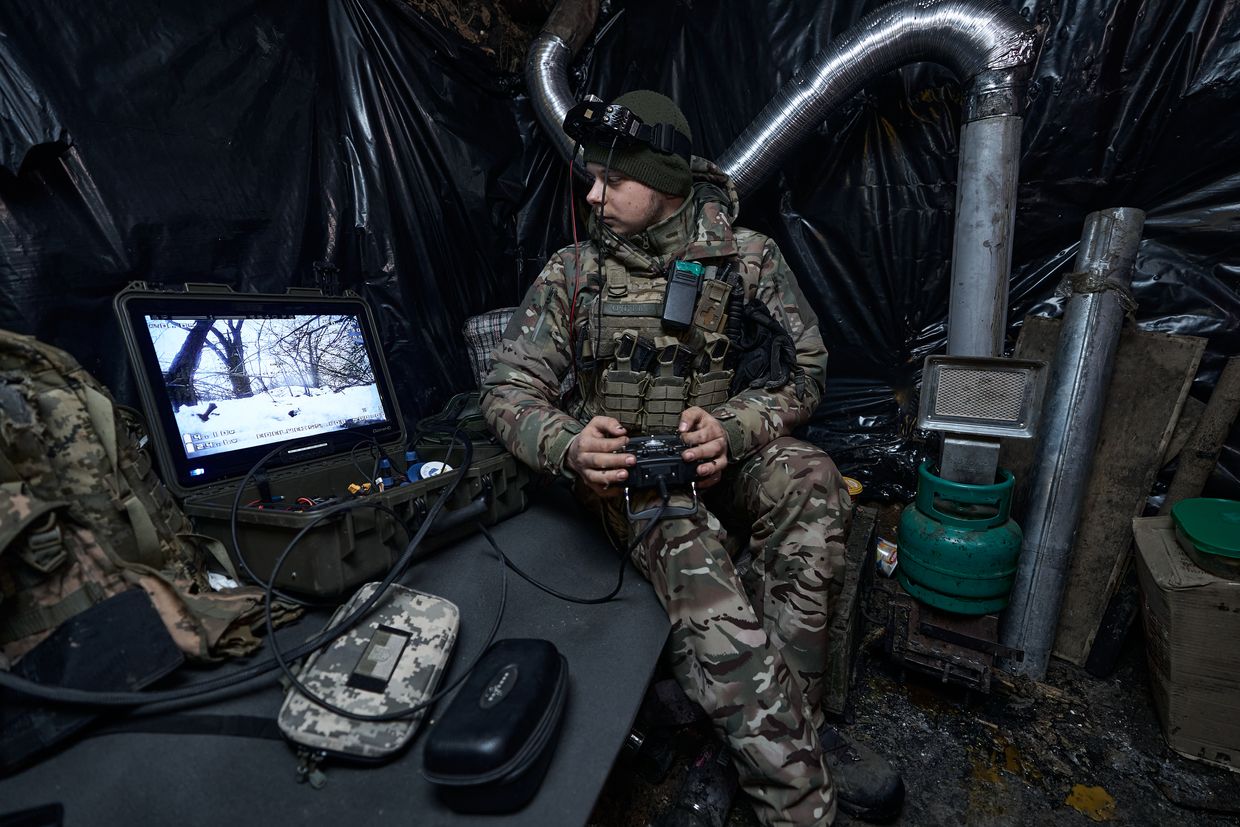
Keep digging
Drones are a major headache for defending Ukrainian troops. Lacking electronic warfare systems to take down the incoming Russian drones effectively, the infantry must keep an eye on the sky to survive.
A group of infantrymen interviewed by the Kyiv Independent said that they are using the quiet moments to build better trenches for an increased chance of survival.
Working in a pair so one can listen closely to the buzzing sound of drones while the other digs, the infantrymen are rotating in and out to guard the positions, according to the servicemen of the 43rd Separate Mechanized Brigade.
"You can be a specialist, a superman, but if (an incoming shell) flies at you, you are gone," Ruslan said.
Being able to distinguish the varying sounds of drones is an important survival factor, Ruslan from the 43rd said. The most dangerous moment is walking toward or away from positions during the rotation, and one must know whether to take cover immediately or run.
The drones carrying a grenade would have a heavy sound, indicating that an explosive can fly at you at any moment, according to Ruslan. And mortars begin raining as soon as the reconnaissance drones such as Orlan-10 find you, he said.
"(FPV drones) are precise equipment, the chances to remain alive diminish (if they find you)," a platoon commander with the 43rd, also named Ruslan, said, emphasizing that its use has intensified over the past few months.
An officer from a unit that has spent a year and a half fighting near Vuhledar down south before being transferred to the Kupiansk axis said Russian troops on this front appeared more experienced and "professional."
"If we saw some stupidity (on the Vuhledar front), such as 20 people assaulting (directly without cover), here they are not moving in such numbers at once," 45-year-old officer Oleksandr with the 68th Separate Mechanized Brigade said.
In addition to being seasoned fighters, Russian troops on the Kupiansk front have more modern weapons and equipment – such as T-90 tanks – than other parts of the front line, military expert Musiienko said.
"(Russia) understands that this direction gives quite a prospect," Musiienko said. "They are thinking of breaking off our (northeastern) front and moving further to capture (the entirety of) Donetsk Oblast, plus threatening Kharkiv. For them, this is one of the priority goals, and that's why exactly these (experienced) units were transferred there."
Uncertainty ahead
According to Cooper, Russia intensifies pressure on Kupiansk from time to time to pin Ukrainian troops in the area and prevent them from reinforcing other parts of the front, primarily the Avdiivka axis.
"First of all, it's the uncertainty," Ruslan said.
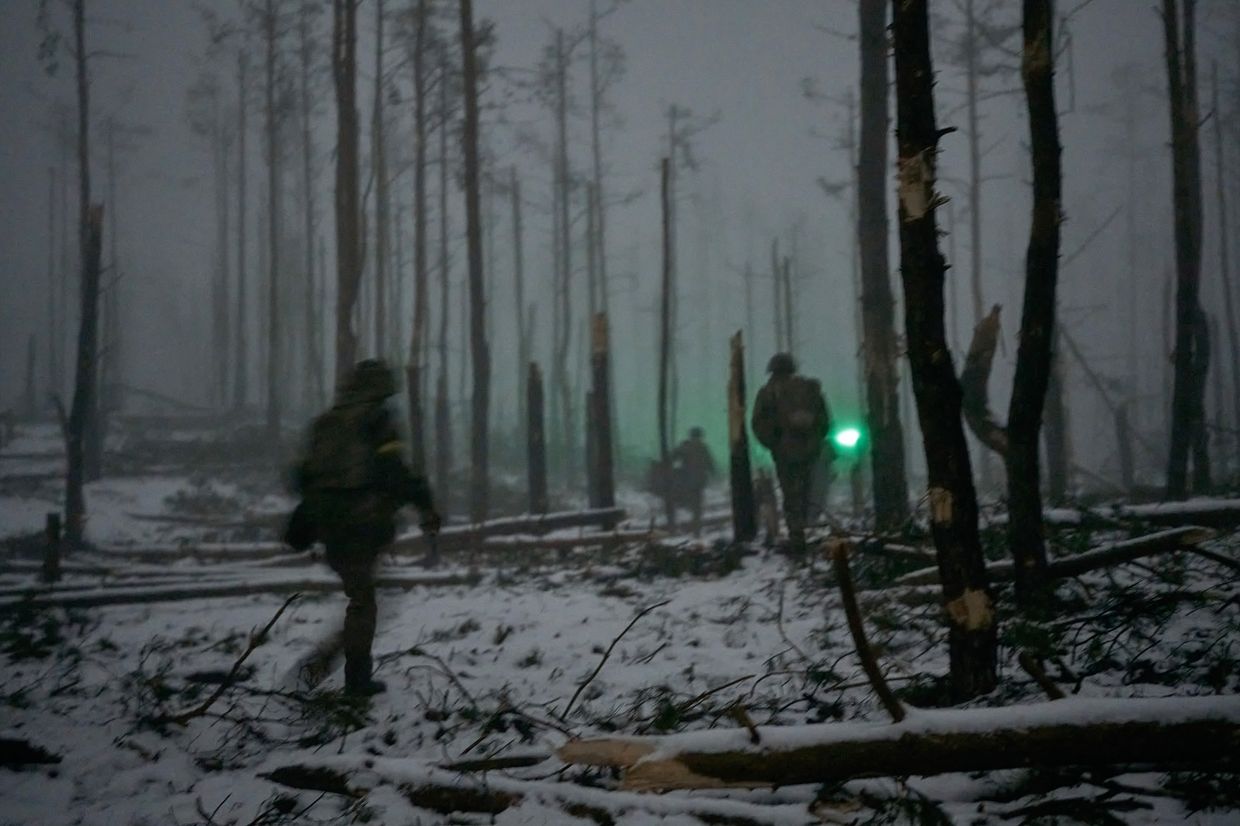
In that summer months, Russia deployed over 100,000 soldiers and nearly 1,000 tanks in the northeastern sector in what military experts say was a strategy to pressure Ukraine into sending more reinforcements that could have been used to push forward Kyiv's summer counteroffensive, which ultimately failed.
A 42-year-old infantryman under a National Guard unit, who goes by the call sign "Molfar," said it's a battle of not running out of resources before the Russian offensive engine dies out next time around.
Like the rest of the front line, Ukrainian units face a shortage of manpower, ammunition, and equipment – especially in contrast to Russia's seemingly endless resources, the interviewees say.
"We are slowly running out of everything," Molfar said, still wearing the mud-covered rain boots he attired during his recent nine-day-long shift on the front line.
"As long as we are alive, we will hold (the defense)."





